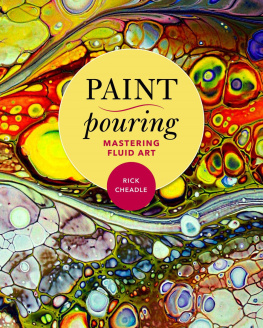Rick Cheadle - Paint Pouring: Mastering fluid Art
Here you can read online Rick Cheadle - Paint Pouring: Mastering fluid Art full text of the book (entire story) in english for free. Download pdf and epub, get meaning, cover and reviews about this ebook. year: 2018, publisher: Racehorse, genre: Children. Description of the work, (preface) as well as reviews are available. Best literature library LitArk.com created for fans of good reading and offers a wide selection of genres:
Romance novel
Science fiction
Adventure
Detective
Science
History
Home and family
Prose
Art
Politics
Computer
Non-fiction
Religion
Business
Children
Humor
Choose a favorite category and find really read worthwhile books. Enjoy immersion in the world of imagination, feel the emotions of the characters or learn something new for yourself, make an fascinating discovery.
- Book:Paint Pouring: Mastering fluid Art
- Author:
- Publisher:Racehorse
- Genre:
- Year:2018
- Rating:5 / 5
- Favourites:Add to favourites
- Your mark:
- 100
- 1
- 2
- 3
- 4
- 5
Paint Pouring: Mastering fluid Art: summary, description and annotation
We offer to read an annotation, description, summary or preface (depends on what the author of the book "Paint Pouring: Mastering fluid Art" wrote himself). If you haven't found the necessary information about the book — write in the comments, we will try to find it.
Rick Cheadle: author's other books
Who wrote Paint Pouring: Mastering fluid Art? Find out the surname, the name of the author of the book and a list of all author's works by series.
Paint Pouring: Mastering fluid Art — read online for free the complete book (whole text) full work
Below is the text of the book, divided by pages. System saving the place of the last page read, allows you to conveniently read the book "Paint Pouring: Mastering fluid Art" online for free, without having to search again every time where you left off. Put a bookmark, and you can go to the page where you finished reading at any time.
Font size:
Interval:
Bookmark:



Copyright 2019 by Rick Cheadle
All rights reserved. No part of this book may be reproduced in any manner without the express written consent of the publisher, except in the case of brief excerpts in critical reviews or articles. All inquiries should be addressed to Racehorse Publishing, 307 West 36th Street, 11th Floor, New York, NY 10018.
Racehorse Publishing books may be purchased in bulk at special discounts for sales promotion, corporate gifts, fund-raising, or educational purposes. Special editions can also be created to specifications. For details, contact the Special Sales Department, Skyhorse Publishing, 307 West 36th Street, 11th Floor, New York, NY 10018 or .
Racehorse Publishing is a pending trademark of Skyhorse Publishing, Inc., a Delaware corporation.
Visit our website at www.skyhorsepublishing.com.
10 9 8 7 6 5 4 3 2 1
Library of Congress Cataloging-in-Publication Data is available on file.
Cover design by Michael Short
Cover and interior photography by Rick Cheadle
Print ISBN: 978-1-63158-299-8
E-Book ISBN: 978-1-63158-300-1
Printed in China
Contents
By M. C. McLemore
By Rick Cheadle
Two Influential Pioneers
The Essentials
My Recipes
Puddle, Pour, Flip Cup, Dirty Pour, Swipe, Swirl... What?
Watching the Paint Dry: More Things
to Do with Dry Paint
Adding to Your Skill Set
Turn Drab into Fab
What I Use and How I Use It
What Works for Me
Icing on the Cake (in My Kitchen)
A Few Words about the Man
Behind the Curtain
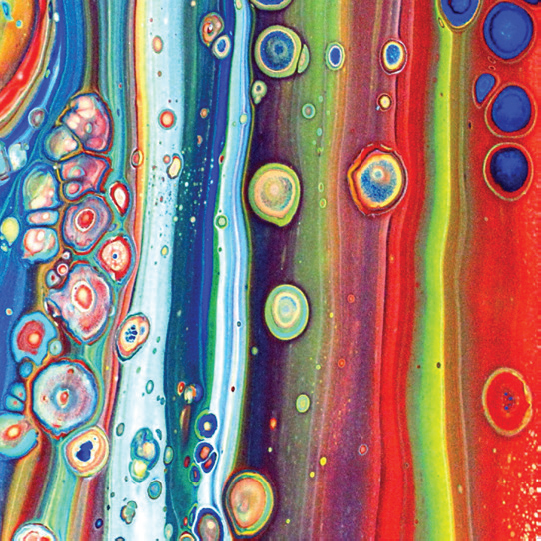
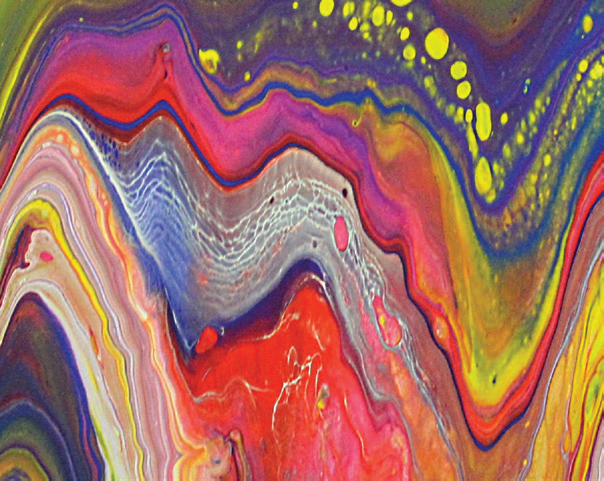
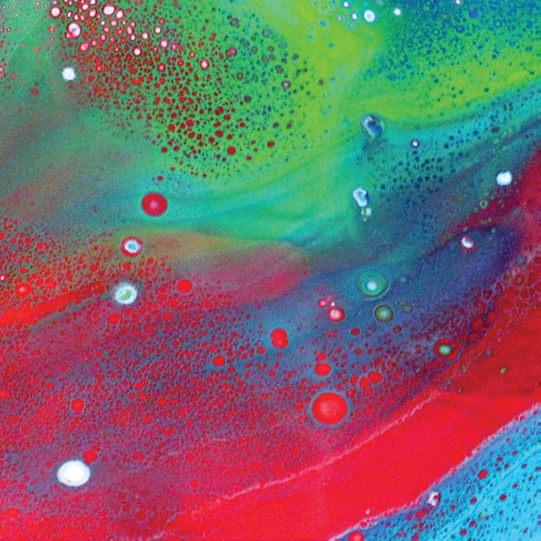

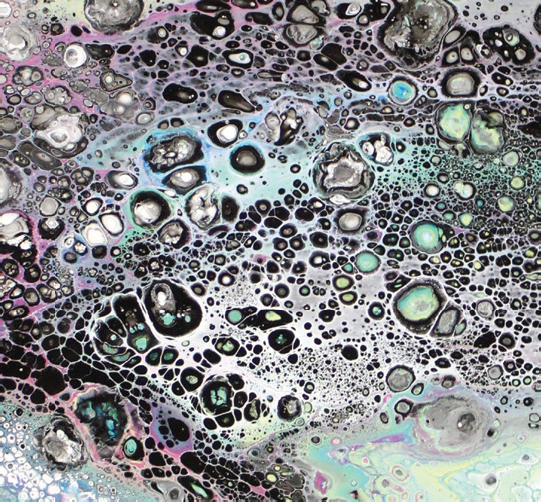
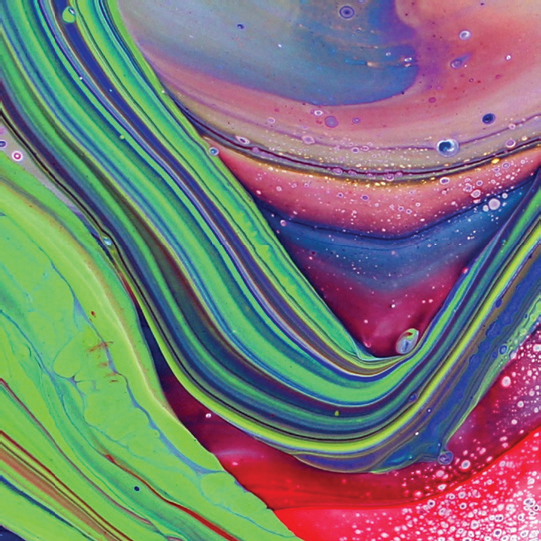
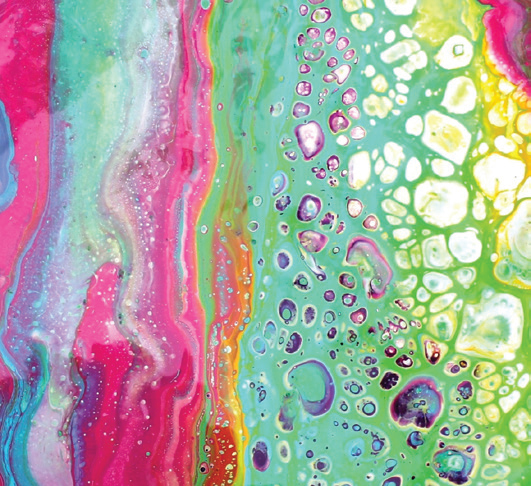
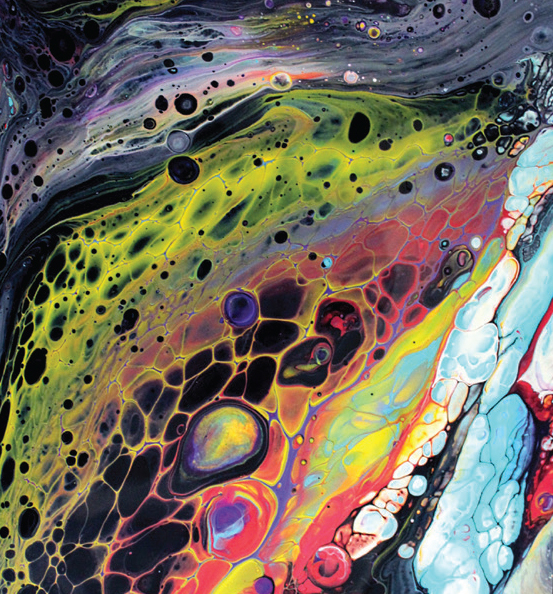
Legal Disclaimer
This book contains strategies, tips, and other artistic advice thatregardless of my own experiences and resultsmay not produce the same results for you. Consequently, I make no guarantees regarding the results you achieve. There are some materials used that may cause health problems and can be dangerous without taking proper precautions. You assume sole responsibility for the outcome of any application of information provided in this book.
Foreword
Who is Rick Cheadle?
When I began searching the Internet for articles, tutorials, and videos on the subject of poured acrylic paintings, Ricks name kept popping up among dozens of others. All artists were making names for themselves with this interesting art form. It took a while for me to start watching Ricks videos because I was attracted to videos where the artist talks throughout the process.
Rick doesnt talk much; at least, not in his videos. He teaches by placing instructive text at strategic locations in his videos and by personally demonstrating his techniques.
The majority of other artists videos showed how to mix, layer, then pour the paints onto various substrates. However, they didnt address how to obtain consistent results in their desire to create cells, which many beginners struggle with. As if he were reading our minds, Rick posted the outcome of his experiments with the different ingredients used to create mixtures that resulted in the almost-magical formation of cells, every time.
Rick, a successful self-taught artist with years of experience, knows the professional-grade art supplies he prefers are expensive and perhaps out of the price range for some beginners. To make this art form accessible to all, he began experimenting in his tutorials with house paints and inexpensive craft paints one can find at big-box hobby and dollar stores, letting his viewers know which ones worked or didnt.
An essential ingredient for creating cells in paint pouring is a dispersant, something that will cause the layered paints to rise to the surface and break into circles within circles of color. The body weight, or viscosity, of the layered paints determines which colors rise to the top the quickest, a process that needs a flow medium. A flow medium thins the paints without changing the strength of the colors. Rick tested all sorts of dispersants and mediums in his search for reliable substitutes for more costly materials.
His passion for art and his drive to spread that passion to others, his curiosity about how things work and desire for answers, as well as his inventiveness and strong entrepreneurial spirit all work to our benefit, helping us become the artists we dream of being.
To answer the question posed at the beginning of this introduction, I think Rick Cheadle is a modern renaissance person, an artist, a musician, a writer, an inventor, and a generous teacher.
M. C. McLemore
Pennsylvania, USA
July 2017
Authors Note
Dear Reader,
Thank you for purchasing my book Paint Pouring: Mastering Fluid Art. I believe the means of making art should be accessible to everyone, which is the guiding force behind writing this book. Poured fluid art is not a new idea, but the materials and techniques have been changed and adapted to meet the needs and methods of todays artists. I believe you will enjoy the process of poured painting and will be amazed at the results you can achieve.
This book outlines the steps I take when producing my poured acrylic paintings. I will share with you how I set up my studio, the materials I use in creating my art, and various techniques I employ in bringing them to a finished state. My book is meant to be a guide to help you learn what to do and, more important, what not to do.
By following the techniques outlined in this book, you will have enough knowledge to start making poured paintings of your own. As you know, nobody can guarantee your success in this field, but the methods revealed in this book will work for you if you apply them correctly. Thats my promise.
So, are you ready? Great! Lets get started.
Happy Pouring!
Rick Cheadle
CHAPTER 1
A Very Brief History of Fluid Artists
David Alfaro Siqueiros (December 29, 1896 January 6, 1974)
S iqueiros was a Mexican muralist who conceived a style of painting in the 1930s referred to as an accidental painting, in which he was able to create a variety of unexpected shapes and textures. He did this by layering different paints that had varying densities. Siqueiros introduced the use of nontraditional art materials (commercial art paints, industrial paints), techniques (using industrial paint sprayers, house paint brushes, spilled paint), and substrates (sides of commercial buildings, for example) to create his art. He was an early influence on American abstract artist Jackson Pollack.
Next pageFont size:
Interval:
Bookmark:
Similar books «Paint Pouring: Mastering fluid Art»
Look at similar books to Paint Pouring: Mastering fluid Art. We have selected literature similar in name and meaning in the hope of providing readers with more options to find new, interesting, not yet read works.
Discussion, reviews of the book Paint Pouring: Mastering fluid Art and just readers' own opinions. Leave your comments, write what you think about the work, its meaning or the main characters. Specify what exactly you liked and what you didn't like, and why you think so.





